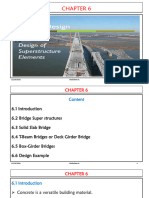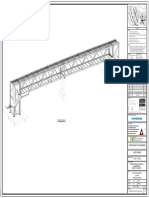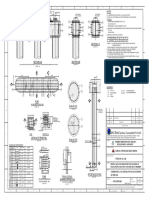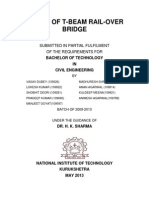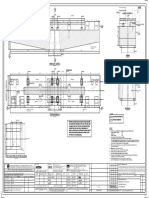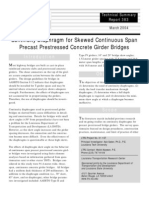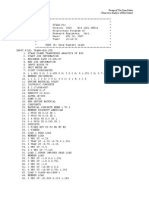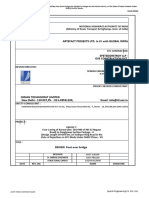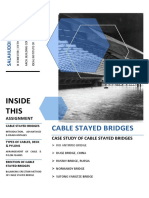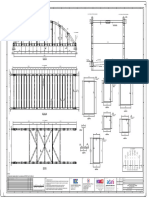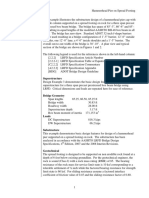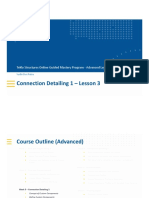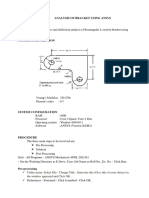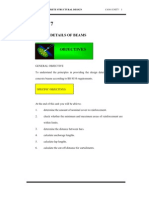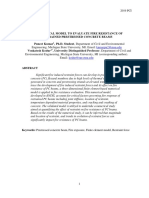0% found this document useful (0 votes)
191 views25 pagesSTRAP Pedestrian Bridge Design Guide
This document provides guidance on modeling, analyzing, and designing a pedestrian bridge using the STRAP software. It describes the geometry, loads, analysis outputs, post-tensioning, and dynamic analysis capabilities of STRAP as applied to a 3-span simply supported reinforced concrete bridge example. Key steps covered include defining the bridge geometry through nodes, beams, offsets, releases, bearings, and restraints; applying self-weight, earthquake, wind, temperature, live load, and other loads; interpreting results such as deflections, shear checks, crack widths; post-tensioning design; and dynamic analysis. The purpose is to equip STRAP users to model and analyze this representative pedestrian bridge project utilizing several core STRAP modules.
Uploaded by
Sushmita KumariCopyright
© © All Rights Reserved
We take content rights seriously. If you suspect this is your content, claim it here.
Available Formats
Download as PDF, TXT or read online on Scribd
0% found this document useful (0 votes)
191 views25 pagesSTRAP Pedestrian Bridge Design Guide
This document provides guidance on modeling, analyzing, and designing a pedestrian bridge using the STRAP software. It describes the geometry, loads, analysis outputs, post-tensioning, and dynamic analysis capabilities of STRAP as applied to a 3-span simply supported reinforced concrete bridge example. Key steps covered include defining the bridge geometry through nodes, beams, offsets, releases, bearings, and restraints; applying self-weight, earthquake, wind, temperature, live load, and other loads; interpreting results such as deflections, shear checks, crack widths; post-tensioning design; and dynamic analysis. The purpose is to equip STRAP users to model and analyze this representative pedestrian bridge project utilizing several core STRAP modules.
Uploaded by
Sushmita KumariCopyright
© © All Rights Reserved
We take content rights seriously. If you suspect this is your content, claim it here.
Available Formats
Download as PDF, TXT or read online on Scribd
/ 25
